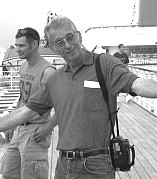|
|
 Fran Ridge |
|
|
 Fran Ridge |
STRUCTURES IN PARACELSUS "C"
RE-IMAGED ?
M1237871462R
/ TARGET OF INTEREST IN JAN 2017
M1237871462 / ADDITIONAL IMAGE IN NOV
2017
| M118769870L & Discovery Report | Tour of Paracelsus Area & NASA Cover-up | Imaged Again Jan 1, 2017 & NASA Silence |
|
20170901 UPDATE ON DISCOVERY IN
2016, UPDATED 20200821
Ananada Sirisena recently discovered a 6th image taken by the LRO spacecraft on November 23, 2017, 11 months after the 5th image was found in September of that year. Rather than create a new report I thought it would be better to just update this one. 2017 The anomaly found by the Lunascan Project on images of Paracelsus C on the lunar Far Side was a major event in June of 2016. Our team of Mark Carlotto, Fran Ridge, and Ananda Sirisena released both our paper and an analysis video five months later, in November. NASA's LRO had imaged the formation four times since 2010 but not recently, and has made no comments after we sent them our reports. Dr. Paul Davies of LRO had suggested in several of his papers that we should be looking for such things on the Moon. But on August 2nd, Sirisena found an image taken just weeks after our last contact with NASA officials! M1237871462R had been a target of interest on January 1st of this year! * Even before that, last spring Ridge discovered that LRO had changed the compelling image on the ActReact zoom-in Map to one much less interesting. As of this date the team's analysis video has had 24,805 hits! The paper itself has been read by over 1407 scientists and other researchers. * To request another location, enter lat,lon in decimal and press submit. M118769870L was imaged on 1/22/2010 M1115441699L, 2/14/2013 M1153132512R, 4/26/2014 M1168450258L, 10/20/2014 M1237871462R, 1/1/2017 M1266095034LC, 11/23/2017 On Aug 6, 2017 ) I emailed two new LRO officials and discussed LRO's extended mission. My first new contact was Craig Tooley, the new Project Manager of LRO. Tooley confirmed that LRO has been on several extended missions. I advised Tooley of the discovery and asked who would be the best person at LRO to query about them. Tooley suggested Mark Robinson, in charge of LROC Camera. Once I brought up the anomalies and asked their opinion, even if the anomalies were some form of surfaced lava tube, everything went silent and I never heard from either man again. To see our web page, which includes the links (at bottom) to the video and paper at M118769870L.htm Aug 6, 2017 To: Mark Robinson, LROC Camera We were excited to hear about LRO's extended missions and hope to see some new adventures near and on the Moon in the years ahead. It helps to know that LRO is not just a great thing we did in the past, but an ongoing lunar mission. As you know, great discoveries help fuel future missions and appropriations. In that regard I can't think of anything of more interest than what Carl Sagan once told us and what Paul Davies was saying less than a decade ago, about finding potential artifacts indicating man's presence (before a mass extinction) or astronauts in ancient times. In fact, we were told to look for such evidence and that's why The Lunascan Project was formed in 1997. We re-investigated a lot of false claims and the project concentrated on such things as the "Blair Cuspids", and with David Williams from National Space Science Data Center we found another footprint image showing the formation and exactly where it was. When LRO imaged the area several years ago we were able to explain what these objects were. Not towers on the Moon but boulders and long shadows. In June of last year we found an LRO image of a very interesting formation on the lunar far side in Paracelsus C. It looked artificial but very very old with cratering overlaying what appeared to be ramped-up fortifications. We then found 3 other images of the same area under different lighting conditions. LRO imaged the area again on Jan 1st of this year.hWe're leaning towards a possible surfaced lava tube end as an explanation but we never received a reply from anyone regarding this. Has anyone on your Team expressed an opinion on this interesting feature which should be an inspiration for an unmanned mission sometime soon on NASA's return to the Moon? The YouTube video we made, with now over 63,000 views, illustrates the public interest is high on things like this can be found at: https://www.youtube.com/watch?v=tL5McOJT2Gk No response from Robinson. . The most recent LRO image is the last one shown at the bottom of this graphic, taken on November 23rd of 2017. For some unknown reason, accidental or deliberate, the very first image is still the most revealing.
Early last year during a internet talk show Dr. Paul Davies of LRO was asked what he thought about Paracelsus C. He claims he didn't know anything about it and said he would take a look. But so far he, or any other NASA official, has yet to respond. The only response at all came from a major skeptic when it comes to tthe ETH, Brad Sparks: "I have to totally disagree. This is SETI-style incoherent nonsense, confusing together varied degrees of technology as if all the same. Only an alien civilizationclose to ours in technological level would screw up and leave remains we could find on the moon and whatnot. Very advanced civilizations would have such stealth that we could never detect them unless they deliberately chose to contact us and we clearly have not been overtly contacted. This year the only ray of hope, ESA, the European Space Agency was requesting proposals for their new lander. In July, the Lunascan Project submitted an application for a mission to the lunar far side and it was accepted. Fran Ridge Coordinator, The Lunascan Project |